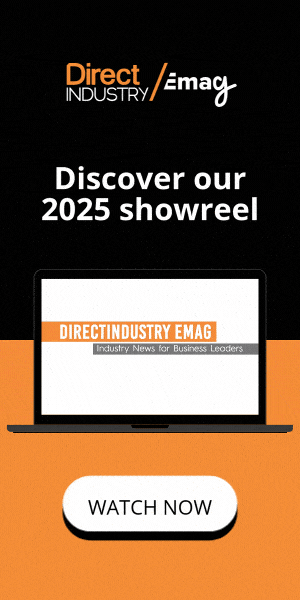How can packaging become more respectful of the environment? While the industry is progressing in this area and plastic alternatives are increasingly being adopted by manufacturers across sectors, there is still a long way to go. However, more and more companies are offering bio-based packaging to their clients or are looking to optimize order preparations to avoid over-packaging. Others are relying on AI and algorithmic predictions.
| KEY INSIGHTS |
|---|
| 1/ Eco-friendly packaging alternatives, such as paper-based bags and films, are increasingly being adopted by industries like toys (e.g., LEGO) and cosmetics. 2/ AI and algorithmic tools help companies optimize packaging, reducing material use and improving sustainability and cost-effectiveness. 3/ Slow Logistics, consolidating multiple orders into fewer shipments, lowers packaging waste and CO2 emissions while cutting shipping costs. 4/ Regulatory measures like the EU’s single-use plastic ban and growing consumer demand for sustainability are driving companies to adopt more eco-friendly packaging strategies. |
How to make packaging more ecological, and most importantly, how to eliminate plastic? These are the million-dollar questions that are being posed to industry professionals more frequently. The reasons are clear: between plastic pollution, waste management, over-packaging, product quality issues, and returns, it’s evident that the packaging industry can do better. Furthermore, the industry is increasingly facing pressure from end customers who want more environmentally-friendly solutions. While there’s still a long road ahead, change is starting to happen. Alternative solutions are emerging, and industrial players are beginning to adapt their packaging strategies.
Committed Companies
One company that has made waves recently with its packaging strategy change is LEGO, the toy manufacturer. The Danish giant is gradually replacing the plastic bags containing its iconic building blocks with paper alternatives.
On Lego’s website, the company explains:
“We are gradually replacing our single-use plastic bags with paper bags. While our boxes still contain polypropylene (PP) or low-density polyethylene (LDPE) bags, we will progressively replace them with bags made of more than 95% paper. These bags will have a thin plastic layer inside, which allows them to be sealed and ensures their suitability to hold LEGO bricks.”
We noticed that Lego’s latest release, the Star Wars Jabba’s Sail Barge, has already switched to paper bags. The entire set of bricks comes packaged in cardboard boxes and the aforementioned paper bags, as seen on the pictures below.


The paper used for these new, more ecological bags comes from forests certified by the Forest Stewardship Council (FSC) and FSC-certified wood, according to LEGO.
In cosmetics too, awareness is growing, and alternatives to plastic packaging are becoming more frequent, as we have previously reported in one of our investigations.
READ MORE
Brands that are committed to sustainability often have a strong environmental responsibility toward their customers. These customers, increasingly sensitive to pollution issues, urge the brands to evolve their practices. For this reason, cosmetic brands are often the first to massively invest in searching for packaging solutions that align with their customers’ principles. In essence, it’s a commercial argument.
Examples of Alternative Solutions
Fortunately, ecological and bio-based alternatives to traditional plastic packaging exist.
Antalis is a distributor of professional and industrial packaging, ranging from cardboard boxes to stretch film, adhesive tape, and cushioning systems. The company supports its clients across various industrial sectors, including automotive, e-commerce, and pharmaceuticals. Present in 31 countries, Antalis counts Unilever, Amazon, and Apple among its clients.
Antalis’s catalog increasingly features eco-friendly packaging products that can replace plastic in certain applications. The company has even implemented a certification system for eco-responsible packaging available in its catalog, as explained by Arnaud Thiaucourt, Market Intelligence Manager at Antalis.
“This Green Star system involves rating each of our products from one to five stars based on criteria that define the product’s environmental quality: its recyclability, its origin (whether it’s bio-based materials or not, typically paper or cardboard versus plastic), its reusability, and its ability to be used multiple times versus single-use plastic, for example. This five-star system allows our customers to make informed and responsible choices.”
Among the Green Star-certified packaging are paper stretch film, paper strapping, self-sealing paper, and starch-based adhesive.

Paper Stretch Film
Plastic stretch film is the most consumed packaging material worldwide. Antalis offers a 100% paper solution as an alternative to plastic.
Strapping
Strapping refers to the rigid plastic bands used to stabilize pallets, which are still mostly made from high-density polyethylene (HDPE). Paper alternatives also exist in this area, comments Arnaud:
“For certain applications and uses, it allows for the replacement of plastic. Many clients store pallets in warehouses without transporting them. In these cases, paper strapping works perfectly since there are no movement constraints or forces exerted on the pallet.”
Adhesives
Adhesives are also evolving. Antalis offers a self-sealing packaging solution, a paper-based material coated with a natural product that allows the paper to stick to itself but not to the products. This type of packaging is suitable for items like smartphones. Another popular alternative to chemical adhesives is starch.
The goal for Antalis, as Arnaud explains, isn’t necessarily to push five-star rated products on clients at the expense of all others, especially since it’s still challenging to eliminate plastic from all packaging.
“The objective is to support our clients’ gradual transition. Our role is to provide them with the best possible insight into the environmental properties of the products on the market, allowing them to gradually replace plastic packaging where possible.”
Antalis claims to be the only international player in the packaging sector offering this type of service to its clients. Launched two years ago, the Green Star system has yet to produce its first results.

Challenges
Despite these initiatives aimed at changing packaging strategies and raising awareness about new forms of logistics, challenges remain. Permanently eliminating plastic seems difficult for now, comments Arnaud:
“Plastic is highly efficient in terms of resistance, design, and protecting goods, so it’s tough to replace plastic everywhere. For example, if we ask the automotive industry to use paper stretch film, which is slightly more expensive while being less resistant to moisture—especially for components like metal parts—it’s complicated. Their current focus is reducing CO2 emissions from their vehicles, so more eco-friendly packaging is secondary, even though they have internal efforts to replace packaging. However, for some applications, plastic still dominates.”
Over-packaging is another issue. Many sectors face packaging overuse due to industry constraints, Arnaud continues:
“I’m thinking particularly of the automotive and aerospace industries, which produce sensitive, costly, and fragile components. These parts require the best possible protection for storage, transport, and final assembly, leading to significant packaging needs.”
In terms of cost, there is a slight price increase for using bio-based packaging. For example, paper stretch film requires more material than plastic stretch film for the same performance, resulting in higher costs.
Packaging Optimization
For industries that cannot yet fully adopt eco-friendly packaging, either for financial reasons or because plastic is irreplaceable, there are still ways to improve packaging efficiency.
This is what the logistics company Skipper Groupe advocates. The company manages logistics platforms and offers multichannel B2B/B2C order preparation and shipping solutions. They also help clients optimize packaging to reduce waste.
Fabien Jouvet, Skipper Groupe’s director, explains:
“The idea is to use as few packages as possible and fill them better. This involves adjusting dispersion coefficients and carton sizes to match order volumes. This reduces the amount of packaging and, notably, the need for void fill, leading to better waste management.”
To optimize packaging steps, Skipper Groupe uses software for pre-packing. Algorithms guide operators on which type of box to use after calculating the order’s volume.
Another key point for the company is factoring in the environmental cost of poor quality, Fabien adds:
“When a box is poorly packaged, with a product that’s not well-secured, and the product arrives damaged, it comes back to you. So we focus a lot on quality control to minimize returns.”
One packaging solution they offer to clients is called Korvu. This is a box with an internal film that holds products in place. It is widely used by clients in the cosmetics industry.
“For example, you place the cream bottle under the film, and when you close the box, the pressure stretches the film over the product, keeping it secure against the carton. As a result, the product doesn’t move, eliminating the need for extra padding. With every 150 Korvu boxes, we save 1 cubic meter of packaging.”
Another common practice in the industry is using adjustable-height cartons, where the box height is cut to fit the product, reducing space.
Arnaud from Antalis also aims to leverage artificial intelligence to configure an optimal packaging solution based on a video or photo of a product.
“For example, we take a photo or video of an industrial component to be packaged, and the AI tool will recommend, from our existing stock of products, the most efficient solution. It can maximize packaging material usage, minimize waste, and select the most suitable packaging to meet the client’s product protection requirements.”

Slow Logistics
Fabien from Skipper Groupe seeks to go even further, aiming to completely rethink the entire logistics chain. For the past four years, Skipper Groupe has been advocating for slow logistics, a system that consolidates orders to slow down delivery flows. The idea is simple: instead of preparing multiple daily orders for the same client, Skipper prepares all of them in one go and delivers them, for example, just once a week. The benefit is fewer packages, but there is more.
“We’re working with companies like Spit, which manufactures drills. This year, we encouraged them to consolidate and group their orders. Instead of sending parcels every day to the same place, we process the orders daily but only deliver once a week. The result? A 52% reduction in CO2 emissions and a 62% reduction in shipping costs.”
Skipper Groupe hopes to raise awareness for a more ecological packaging industry.
“It will likely take off in e-commerce when buyers put enough pressure on the industry to drive change.”
Fabien believes that the industrial sector, already accustomed to order slowdowns for financial optimization, is technically ready for slow logistics.

Regulations
For Arnaud from Antalis, regulatory changes will play a significant role in pushing for more sustainable packaging. The European Union has already started by banning single-use plastics across the continent by 2030.
“Today, industries know that sooner or later, regulations will require them to adopt more eco-friendly packaging, or they’ll face penalties. Some brands are getting ahead of this, eliminating plastic immediately and adopting radical changes in their packaging consumption.”
However, for other sectors, such as the automotive industry, the costs are currently too high to act proactively. Still, Arnaud is optimistic about the shifting attitudes:
“Clients are buying less and less padding systems, like crumpled kraft paper, which used to fill up 90% of the unnecessary volume in cartons. That almost doesn’t exist anymore.”
While there’s still a long way to go, the industry is already making progress.











